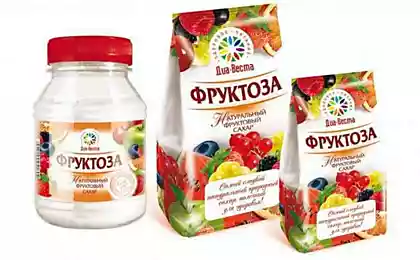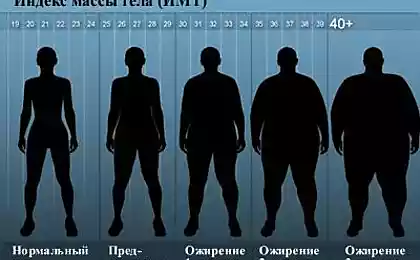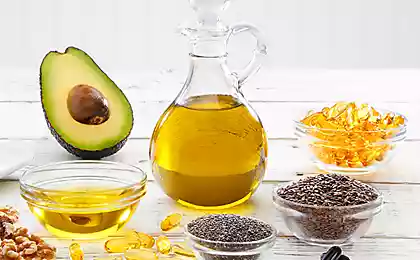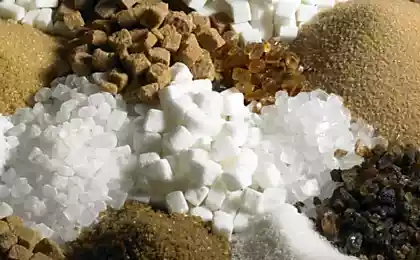804
Sugar: the bitter truth — the main theses of the legendary lecture by Robert Lustig
Endocrinologist Robert Lustig, a specialist on children's metabolic disorders, I read popular science lecture "Sugar: the bitter truth" at the University of California (San Francisco) five years ago, in July 2009. We have translated and summarized the main theses of the legendary performances of the most popular American doctors.
Obesity has nothing to do with free choice. Nobody chooses to be fat, and, moreover, do not choose neither one.
Obesity not directly linked with the lack of movement. We are seeing an epidemic of excess weight among infants of six months who can not and are not required to move much. And if you think that the fact of a lack of motion, then how do you explain this fact?

It's not even just that, we began to eat more. We definitely eat more than before. Nobody argues. Question: why we eat more? Adolescents today are eating 275 calories more per day while adults on 300-330 calories per day more than 20 years ago. But the question here is not just quantity of food but in its quality.
Our food is rich in substances that disturb the metabolism of hormones responsible for the mechanisms of hunger and satiety. For example, leptin is a hormone released by adipose tissue into the bloodstream and according to our brain — all right, thank you, we ate no longer necessary. However, if people suddenly began to eat 300 kcal more, means that leptin doesn't work. It means that something in our endocrine system is not working.
What exactly is broken, you can see if you look at the composition of those additional 300 calories. What is it? Fat? No, the fat we eat only 5 grams more than 20 years ago. But the carbs we were eating 79 grams more.
Since 1960-ies we have to restrict fats, but the amount of sugar and fructose in our diet is growing steadily in the last half century. We started drinking at 141 per cent, i.e., half as much sweet soda and one-third (35 percent) more fruit juices and other sugary drinks.
How rose Coca Cola bottle 100 years? In 1915, the standard bottle was 6.5 ounces. Drinking one bottle a day, the average person can recover for 8 pounds a year. In 1955, the bottle became more nearly halved — 10 ounces of Coca-Cola, that is 12 pounds per year in 1992 — a 20 oz coke and 26 pounds of fat per year.
Where are these extra pounds, it becomes clear if you look at the composition of sweet drinks. What is in Coca Cola?
1. caffeine — mild stimulant, which, among Pozega, urine output increases, that is, makes you write more and thus lose water.
2. salt, lots of salt — 55 mg in one jar. It's like drinking a pizza. What happens when you lose water and eat salt? You even more thirsty.
3. Sugar. Why so much sugar? To disguise the salt. We all remember the "New coke — 1985"? The new improved formula for Coca-Cola more sugar and more caffeine.
In the study Roger Ludwig and colleagues, published in the Lancet in 2001, traced the effects of consumption of sweet drinks over the course of 19 months. It turned out that each additional sweetened beverage per day for eighteen months increased BMI by 0.24 (in other words, the amount of excess body fat increased by 95 percent).
In the study by James et al, published in the journal BMJ in 2004, describes the experiment, which the authors only compared the level of obesity among schoolchildren in two schools. In the experimental school, the authors removed the soda machine, and in control leave it as it is. In the year that lasted the experiment in the experimental school, the obesity rate has not changed, and in the control increased by 27 percent. Simply put, if you give children access to a sweet soda, they invariably gain weight.
Why? What's wrong with soda? It contains corn syrup with high fructose. Every American consumes an average of 28.5 kilograms of high fructose corn syrup per year.
Fructose syrup is sweeter — about 120 pieces of candy vs 100 units of sugar (pure fructose — 173 units).
It may seem that if the syrup or fructose sweeter, we eat less. In fact, exactly the opposite: sweet drinks and food make us eat more.
There is no difference between high fructose corn syrup and sugar. And syrup and sugar is poison, both poison our body and destroys health. It's not just empty calories, it's poison. And I'll prove it to you.
Sugar or sucrose almost immediately breaks down into glucose and fructose. Before the era of industrial food, in the early 19th century, man had about 15 grams of fructose a day, mainly from fruits, honey and other naturally sweet ingredients. Before the first world — already 16-24 g per day, and after 1977-1978, when the technology of production of fructose syrup from corn, the consumption podskachila doubled, to 37 grams per day. Further amounts of fructose has doubled every few years. In 1994 it was already of 54.7 g per day, today — even more.
That is, we don't just eat more. We are eating more sugar and fructose.
After the Japanese invented a technology to produce fructose syrup, sugar prices and fructose become much more stable and lower. Manufacturers began to add sugar and fructose into everything. First, it is not expensive, second, it whets the appetite, and thus makes a great buy.
Fruit juices have the same effect as the soda, the more juice, the more appetite. In 1972 Kempinski Professor John Yudkin in his book "Pure, white and deadly" accurately described the negative impact of added sugar on the body.
All of what he wrote in the early 1970s — the truth, repeatedly confirmed by scientific data. However, his scientific works and popular books met with great resistance, and was not widespread. The main opponent was The. Ancel Keys — an American nutritionist, promoter follow a low-fat food and protector of sugar. As it turned out, the work of the Case study was financed by the food manufacturers.
Case expressed the idea, which until recently was mainstream in dietetics: fatty food increases the cholesterol level in the blood, and cholesterol provokes atherosclerosis, and diseases of the blood vessels and heart. All this is nothing more than delusion.
We've all heard about "bad cholesterol", which is the language of biochemistry is called low density lipoproteins (LDL). In fact, the situation is somewhat more complicated, because LDL can be of two types A and B. studies show that LDL-A is too light and large, they do not participate in the formation of cholesterol plaques in the blood vessels, and therefore, does not have a relationship to cardiovascular diseases. But LDL-B are smaller and heavier so they are easy to precipitate on the walls, participating in the blockage of blood vessels.
And here fructose and sugar? Recent studies show when you eat a lot of sugar or fructose, LDL levels of type B blood increases dramatically. That is LDL-B is involved in inflammation and formation of plaque on the surface of blood vessels. So LDL-B narrows the lumen of blood vessels and leads to heart disease, heart attacks and other deadly conditions. In turn, fatty food increases the level of LDL And the LDL is harmless, which can not be deposited in the walls of blood vessels, and only used by the body as a nutrient and building material.
What did we do in 1982? First off... We boarded a high carbohydrate diet, calling it nishiiwai. Fat-free industrial food would taste terrible if not added sugar, which eliminates the disadvantages of the taste and caramelisee, makes the food more beautiful. Second, we removed the fiber from the food.
In ancient times, people consume around 200-300 grams of fiber a day. Today, the average person eats 12 grams. Why are we excluded from our diet? Because without fiber, the faster food is frozen, faster ready, faster to digest and more fun. Thirdly, we have replaced the natural fat margarine rich in TRANS-fats, which are now recommended to eliminate from the diet because they are proven to trigger inflammation, cancer and many other diseases.
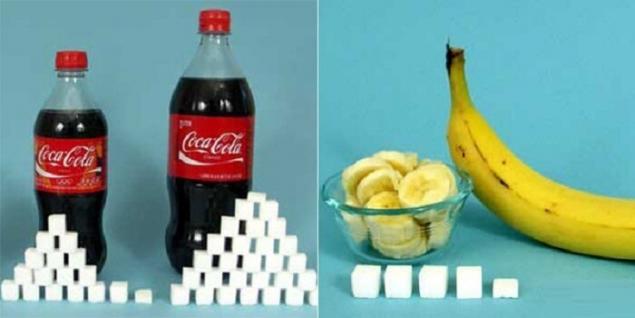
What is the problem with fructose?
Glucose is radically different from the fructose that excess liver glucose is converted into glycogen — a foldable material. Question: how much glycogen can be deposited in the liver without causing body harm? Answer: as much as necessary. Of glycogen in the liver does not happen much, its synthesis and deposition, absolutely healthy process.
There is not a very healthy process where glucose is converted into fat. That is VLDL — very low density lipoproteins are those that also belong to the "bad" cholesterol, causing atherosclerosis.
What happens when the metabolism of two pieces of white bread or glass of orange juice (in other words, 120 calories of sugar). Sucrose breaks up into two parts — glucose and fructose. Glucose is distributed throughout the body, because muscles and the brain, and other tissues are able to digest glucose.
What happens to the fructose? It all remains in the liver because only the liver can digest it. And in the liver it undergoes many biochemical reactions resulting in the formation of substances that trigger gout and high blood pressure. However, the important thing is that a large part of fructose in the liver turns to fat, causing the disease called non-alcoholic fatty steatosis.
What do we call a substance which is not absorbed by the body and only the liver is able to degrade, while a substance that causes a variety of disorders and problems in the body? We call such a substance a poison. And fructose is perfectly fits this definition.
Acute intoxication with ethanol has multiple effects: depression of brain cooling, heart palpitations, lethargy, respiratory depression, loss of control of movement — it makes no sense to list all the students know perfectly well what it was. We know that ethanol is a poison, and has weight restrictions — certain hours and licenses for sale of, food stamps — all this is necessary to regulate the sale of alcohol, because everyone knows that alcohol is toxic.
Fructose, in turn, has none of the above actions, because the brain simply does not assimilate fructose. We do not feel any acute intoxication from fructose.
However, if we look not at the acute and chronic toxicity, the situation changes drastically. Chronic fructose intoxication, and alcohol intoxication causes hypertension, myocardial infarction, lipid disorders, pancreatitis, obesity, disorders of the liver, as well as addictive (if not dependence). Simply put, chronic consumption of fructose also seriously affect your health, as chronic alcohol consumption.
If you think about it, between fructose and alcohol in General have much in common. How do we get alcohol? From sugar. In General, when the sugar is converted into alcohol, at the level of biochemistry and metabolism in the human body it has many of its toxic properties. Anyway, ethanol and fructose are one and the same.
Recommendations:
1. Get rid of all sweetened drinks: soda, juice, sweet yoghurt, sweet tea and coffee, lemonade, sports drinks with sugar and fructose — to the scrap. Only water, milk and unsweetened tea and coffee.
2. Eat unrefined carbohydrates are rich in fiber. Fruits instead of fruit juices, flour, bread with bran and so on.
3. Wait 20 minutes before you take second dose.
4. Spend as much time in front of TV, how much you spend on physical activity.
We conducted an experiment and found that these rules work great — without them, the person loses weight. Then, eliminating each of them, we found out which of these rules is the key, that is, without any rules other three recommendations do not work. It turned out that without the first. If not, delete from the ration sweet drinks to lose weight fails.
Why is physical activity so important for weight loss? One chocolate chip cookie contains as many calories as you burn in the 20 minute jog. Calories here at all at what. Than they are actually useful:
Throughout the menu of McDonald's can be found seven positions, in which there is no fructose syrup:
1. Fries (it has a lot of salt, starch and fat)
2. Fried potatoes (salt, chrismal and fat)
3. Chicken mcnuggets (salt, starch, fat)
4. Sausage
5. Diet coke
6. Coffee without sugar
7. Tea without sugar
Few people limited to this list, and even fewer people eat the same French fries or chicken nuggets without sauce, and the sauces added sugar is more than enough to whet the appetite.
Another example. Milk contains about 15 grams of carbohydrates per Cup, for the most part, it's unsweetened lactose. Chocolate milk and 29 grams of sugar, that is, twice as much, and the other half is added sucrose. It's like instead of a glass of milk to give the child a glass of milk and half a Cup of sweet orange juice.
In the Bank baby food 43% corn syrup and 10% sugar. As a result, today we are witnessing an epidemic of obesity among six-month babies. And there are a huge number of studies that show that the more you give the child sugar in early childhood, the more it is predisposed to sugar addiction in the future. And the more woman eating sweets during pregnancy, the more susceptible to the sweet baby is born, since glucose is well absorbed through the placenta.
You don't come to mind to give the child a can of beer, but you can give him a can of coke, although all biochemical indicators one is not different from the other.
Follow a low-fat diet not really low-carb because it whets appetite, sugar and fructose can make a person eat more, including more carbs and more fat too! So, paradoxically, low fat diets is high carbohydrate and high-fat at the same time.
According to the rules of the FDA fructose is classified as GRAS, which translates as "generally considered safe" product. Where does this show? Nowhere. It has not been proven by any scientific research (in fact, the opposite has been proven time and again). The idea that fructose is a GRAS originates from the idea that a lot of fructose and some natural fruits that is a natural substance. Well, tobacco is also quite a natural plant, but nobody comes to mind to say that it is harmless.
Enzymes in the human body: IT is NECESSARY to know everyone!This drink will relieve a migraine within minutes
The problem is that the FDA considers toxic, causing acute toxic reaction. But fructose does not cause acute poisoning, because the brain simply do not perceive. Fructose is a slow, chronic toxin. It poisons the body with constant consumption, and that's exactly what we consume.
Recognition of the enormous harm that causes the fructose, would have a lot of unpleasant economic consequences for America. We have been exporting? Weapons, entertainment and food. Machine? Computers? I don't think. The truth about fructose is bad news. Because fructose is a poison.published
Source: lchf.ru/1940
Obesity has nothing to do with free choice. Nobody chooses to be fat, and, moreover, do not choose neither one.
Obesity not directly linked with the lack of movement. We are seeing an epidemic of excess weight among infants of six months who can not and are not required to move much. And if you think that the fact of a lack of motion, then how do you explain this fact?

It's not even just that, we began to eat more. We definitely eat more than before. Nobody argues. Question: why we eat more? Adolescents today are eating 275 calories more per day while adults on 300-330 calories per day more than 20 years ago. But the question here is not just quantity of food but in its quality.
Our food is rich in substances that disturb the metabolism of hormones responsible for the mechanisms of hunger and satiety. For example, leptin is a hormone released by adipose tissue into the bloodstream and according to our brain — all right, thank you, we ate no longer necessary. However, if people suddenly began to eat 300 kcal more, means that leptin doesn't work. It means that something in our endocrine system is not working.
What exactly is broken, you can see if you look at the composition of those additional 300 calories. What is it? Fat? No, the fat we eat only 5 grams more than 20 years ago. But the carbs we were eating 79 grams more.
Since 1960-ies we have to restrict fats, but the amount of sugar and fructose in our diet is growing steadily in the last half century. We started drinking at 141 per cent, i.e., half as much sweet soda and one-third (35 percent) more fruit juices and other sugary drinks.
How rose Coca Cola bottle 100 years? In 1915, the standard bottle was 6.5 ounces. Drinking one bottle a day, the average person can recover for 8 pounds a year. In 1955, the bottle became more nearly halved — 10 ounces of Coca-Cola, that is 12 pounds per year in 1992 — a 20 oz coke and 26 pounds of fat per year.
Where are these extra pounds, it becomes clear if you look at the composition of sweet drinks. What is in Coca Cola?
1. caffeine — mild stimulant, which, among Pozega, urine output increases, that is, makes you write more and thus lose water.
2. salt, lots of salt — 55 mg in one jar. It's like drinking a pizza. What happens when you lose water and eat salt? You even more thirsty.
3. Sugar. Why so much sugar? To disguise the salt. We all remember the "New coke — 1985"? The new improved formula for Coca-Cola more sugar and more caffeine.
In the study Roger Ludwig and colleagues, published in the Lancet in 2001, traced the effects of consumption of sweet drinks over the course of 19 months. It turned out that each additional sweetened beverage per day for eighteen months increased BMI by 0.24 (in other words, the amount of excess body fat increased by 95 percent).
In the study by James et al, published in the journal BMJ in 2004, describes the experiment, which the authors only compared the level of obesity among schoolchildren in two schools. In the experimental school, the authors removed the soda machine, and in control leave it as it is. In the year that lasted the experiment in the experimental school, the obesity rate has not changed, and in the control increased by 27 percent. Simply put, if you give children access to a sweet soda, they invariably gain weight.
Why? What's wrong with soda? It contains corn syrup with high fructose. Every American consumes an average of 28.5 kilograms of high fructose corn syrup per year.
Fructose syrup is sweeter — about 120 pieces of candy vs 100 units of sugar (pure fructose — 173 units).
It may seem that if the syrup or fructose sweeter, we eat less. In fact, exactly the opposite: sweet drinks and food make us eat more.
There is no difference between high fructose corn syrup and sugar. And syrup and sugar is poison, both poison our body and destroys health. It's not just empty calories, it's poison. And I'll prove it to you.
Sugar or sucrose almost immediately breaks down into glucose and fructose. Before the era of industrial food, in the early 19th century, man had about 15 grams of fructose a day, mainly from fruits, honey and other naturally sweet ingredients. Before the first world — already 16-24 g per day, and after 1977-1978, when the technology of production of fructose syrup from corn, the consumption podskachila doubled, to 37 grams per day. Further amounts of fructose has doubled every few years. In 1994 it was already of 54.7 g per day, today — even more.
That is, we don't just eat more. We are eating more sugar and fructose.
After the Japanese invented a technology to produce fructose syrup, sugar prices and fructose become much more stable and lower. Manufacturers began to add sugar and fructose into everything. First, it is not expensive, second, it whets the appetite, and thus makes a great buy.
Fruit juices have the same effect as the soda, the more juice, the more appetite. In 1972 Kempinski Professor John Yudkin in his book "Pure, white and deadly" accurately described the negative impact of added sugar on the body.
All of what he wrote in the early 1970s — the truth, repeatedly confirmed by scientific data. However, his scientific works and popular books met with great resistance, and was not widespread. The main opponent was The. Ancel Keys — an American nutritionist, promoter follow a low-fat food and protector of sugar. As it turned out, the work of the Case study was financed by the food manufacturers.
Case expressed the idea, which until recently was mainstream in dietetics: fatty food increases the cholesterol level in the blood, and cholesterol provokes atherosclerosis, and diseases of the blood vessels and heart. All this is nothing more than delusion.
We've all heard about "bad cholesterol", which is the language of biochemistry is called low density lipoproteins (LDL). In fact, the situation is somewhat more complicated, because LDL can be of two types A and B. studies show that LDL-A is too light and large, they do not participate in the formation of cholesterol plaques in the blood vessels, and therefore, does not have a relationship to cardiovascular diseases. But LDL-B are smaller and heavier so they are easy to precipitate on the walls, participating in the blockage of blood vessels.
And here fructose and sugar? Recent studies show when you eat a lot of sugar or fructose, LDL levels of type B blood increases dramatically. That is LDL-B is involved in inflammation and formation of plaque on the surface of blood vessels. So LDL-B narrows the lumen of blood vessels and leads to heart disease, heart attacks and other deadly conditions. In turn, fatty food increases the level of LDL And the LDL is harmless, which can not be deposited in the walls of blood vessels, and only used by the body as a nutrient and building material.
What did we do in 1982? First off... We boarded a high carbohydrate diet, calling it nishiiwai. Fat-free industrial food would taste terrible if not added sugar, which eliminates the disadvantages of the taste and caramelisee, makes the food more beautiful. Second, we removed the fiber from the food.
In ancient times, people consume around 200-300 grams of fiber a day. Today, the average person eats 12 grams. Why are we excluded from our diet? Because without fiber, the faster food is frozen, faster ready, faster to digest and more fun. Thirdly, we have replaced the natural fat margarine rich in TRANS-fats, which are now recommended to eliminate from the diet because they are proven to trigger inflammation, cancer and many other diseases.

What is the problem with fructose?
- She's become caramelizing seven times lighter than glucose. The dark brown crust formed on the grill, a similar process occurs on the inner surface of the arteries in atherosclerosis the consumption of fructose or sugar — even brown color is the same.
- Fructose, unlike glucose, does not suppress the release of ghrelin, the hunger hormone. Simply put, it does not saturate. Food and drinks with fructose, it is impossible to get enough. Therefore, a child who drinks a soda with fructose and goes to McDonald's, eats more, not less.
- Fructose does not stimulate insulin release. If insulin is not growing, then grows and leptin, the hormone of satiety. But if leptin is not growing, the brain receives the signal that you ate. So we eat more.
- Finally, the metabolism of fructose in liver is completely different from glucose.
Glucose is radically different from the fructose that excess liver glucose is converted into glycogen — a foldable material. Question: how much glycogen can be deposited in the liver without causing body harm? Answer: as much as necessary. Of glycogen in the liver does not happen much, its synthesis and deposition, absolutely healthy process.
There is not a very healthy process where glucose is converted into fat. That is VLDL — very low density lipoproteins are those that also belong to the "bad" cholesterol, causing atherosclerosis.
What happens when the metabolism of two pieces of white bread or glass of orange juice (in other words, 120 calories of sugar). Sucrose breaks up into two parts — glucose and fructose. Glucose is distributed throughout the body, because muscles and the brain, and other tissues are able to digest glucose.
What happens to the fructose? It all remains in the liver because only the liver can digest it. And in the liver it undergoes many biochemical reactions resulting in the formation of substances that trigger gout and high blood pressure. However, the important thing is that a large part of fructose in the liver turns to fat, causing the disease called non-alcoholic fatty steatosis.
What do we call a substance which is not absorbed by the body and only the liver is able to degrade, while a substance that causes a variety of disorders and problems in the body? We call such a substance a poison. And fructose is perfectly fits this definition.
Acute intoxication with ethanol has multiple effects: depression of brain cooling, heart palpitations, lethargy, respiratory depression, loss of control of movement — it makes no sense to list all the students know perfectly well what it was. We know that ethanol is a poison, and has weight restrictions — certain hours and licenses for sale of, food stamps — all this is necessary to regulate the sale of alcohol, because everyone knows that alcohol is toxic.
Fructose, in turn, has none of the above actions, because the brain simply does not assimilate fructose. We do not feel any acute intoxication from fructose.
However, if we look not at the acute and chronic toxicity, the situation changes drastically. Chronic fructose intoxication, and alcohol intoxication causes hypertension, myocardial infarction, lipid disorders, pancreatitis, obesity, disorders of the liver, as well as addictive (if not dependence). Simply put, chronic consumption of fructose also seriously affect your health, as chronic alcohol consumption.
If you think about it, between fructose and alcohol in General have much in common. How do we get alcohol? From sugar. In General, when the sugar is converted into alcohol, at the level of biochemistry and metabolism in the human body it has many of its toxic properties. Anyway, ethanol and fructose are one and the same.
Recommendations:
1. Get rid of all sweetened drinks: soda, juice, sweet yoghurt, sweet tea and coffee, lemonade, sports drinks with sugar and fructose — to the scrap. Only water, milk and unsweetened tea and coffee.
2. Eat unrefined carbohydrates are rich in fiber. Fruits instead of fruit juices, flour, bread with bran and so on.
3. Wait 20 minutes before you take second dose.
4. Spend as much time in front of TV, how much you spend on physical activity.
We conducted an experiment and found that these rules work great — without them, the person loses weight. Then, eliminating each of them, we found out which of these rules is the key, that is, without any rules other three recommendations do not work. It turned out that without the first. If not, delete from the ration sweet drinks to lose weight fails.
Why is physical activity so important for weight loss? One chocolate chip cookie contains as many calories as you burn in the 20 minute jog. Calories here at all at what. Than they are actually useful:
- increases the sensitivity of muscles to insulin.
- reduces stress by lowering the appetite because of stress and obesity go hand in hand
- changes the biochemistry of the liver, establishing a healthy metabolism
- it reduces the absorption of carbohydrates in the intestine, consequently reducing the release of insulin
- increases the feeling of satiety
- inhibits absorption of some free fatty acids in the intestine. In the end, the gut bacteria convert them to short chain fatty acids which suppress insulin release. In short, dietary fiber brings many benefits.
Throughout the menu of McDonald's can be found seven positions, in which there is no fructose syrup:
1. Fries (it has a lot of salt, starch and fat)
2. Fried potatoes (salt, chrismal and fat)
3. Chicken mcnuggets (salt, starch, fat)
4. Sausage
5. Diet coke
6. Coffee without sugar
7. Tea without sugar
Few people limited to this list, and even fewer people eat the same French fries or chicken nuggets without sauce, and the sauces added sugar is more than enough to whet the appetite.
Another example. Milk contains about 15 grams of carbohydrates per Cup, for the most part, it's unsweetened lactose. Chocolate milk and 29 grams of sugar, that is, twice as much, and the other half is added sucrose. It's like instead of a glass of milk to give the child a glass of milk and half a Cup of sweet orange juice.
In the Bank baby food 43% corn syrup and 10% sugar. As a result, today we are witnessing an epidemic of obesity among six-month babies. And there are a huge number of studies that show that the more you give the child sugar in early childhood, the more it is predisposed to sugar addiction in the future. And the more woman eating sweets during pregnancy, the more susceptible to the sweet baby is born, since glucose is well absorbed through the placenta.
You don't come to mind to give the child a can of beer, but you can give him a can of coke, although all biochemical indicators one is not different from the other.
Follow a low-fat diet not really low-carb because it whets appetite, sugar and fructose can make a person eat more, including more carbs and more fat too! So, paradoxically, low fat diets is high carbohydrate and high-fat at the same time.
According to the rules of the FDA fructose is classified as GRAS, which translates as "generally considered safe" product. Where does this show? Nowhere. It has not been proven by any scientific research (in fact, the opposite has been proven time and again). The idea that fructose is a GRAS originates from the idea that a lot of fructose and some natural fruits that is a natural substance. Well, tobacco is also quite a natural plant, but nobody comes to mind to say that it is harmless.
Enzymes in the human body: IT is NECESSARY to know everyone!This drink will relieve a migraine within minutes
The problem is that the FDA considers toxic, causing acute toxic reaction. But fructose does not cause acute poisoning, because the brain simply do not perceive. Fructose is a slow, chronic toxin. It poisons the body with constant consumption, and that's exactly what we consume.
Recognition of the enormous harm that causes the fructose, would have a lot of unpleasant economic consequences for America. We have been exporting? Weapons, entertainment and food. Machine? Computers? I don't think. The truth about fructose is bad news. Because fructose is a poison.published
Source: lchf.ru/1940



